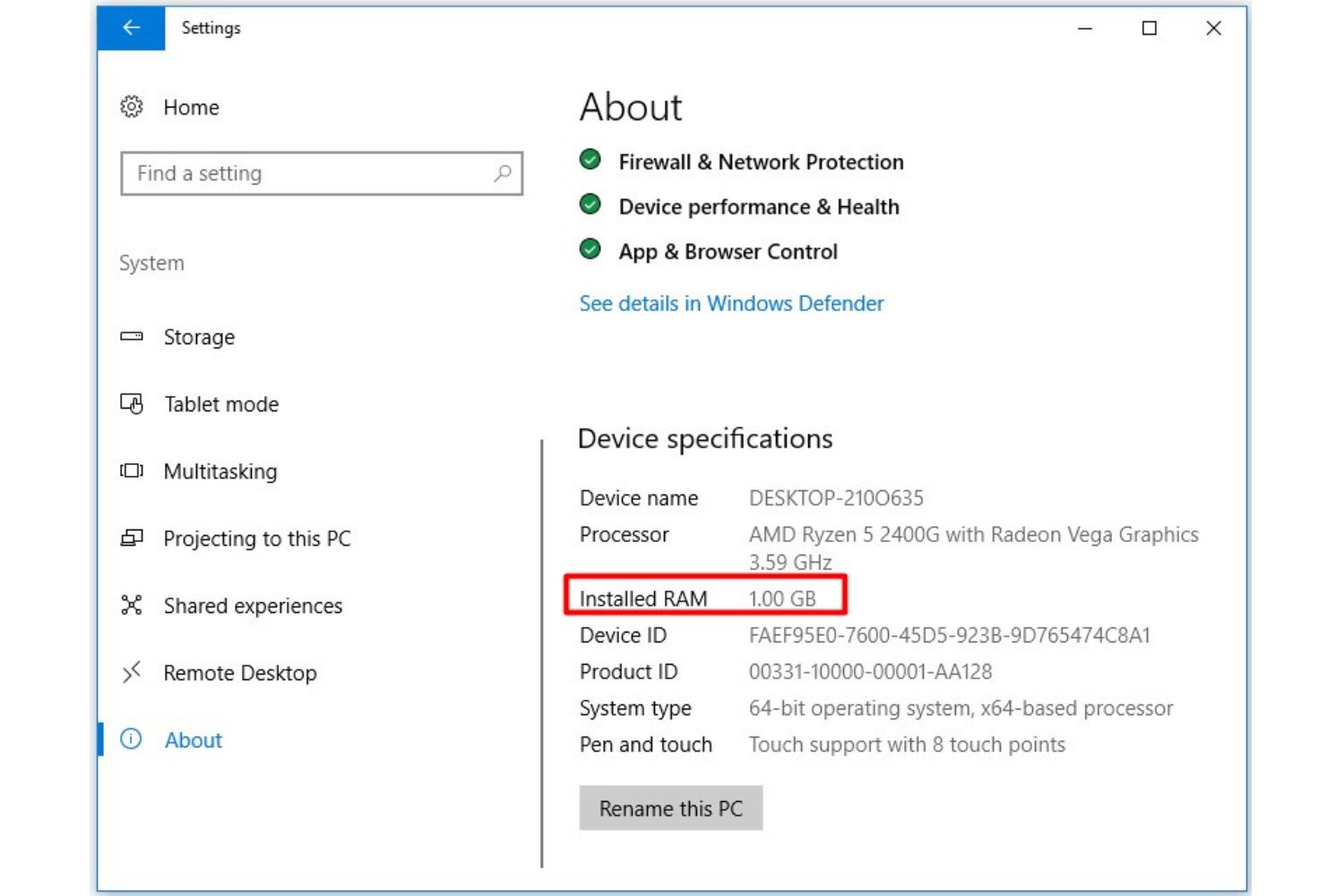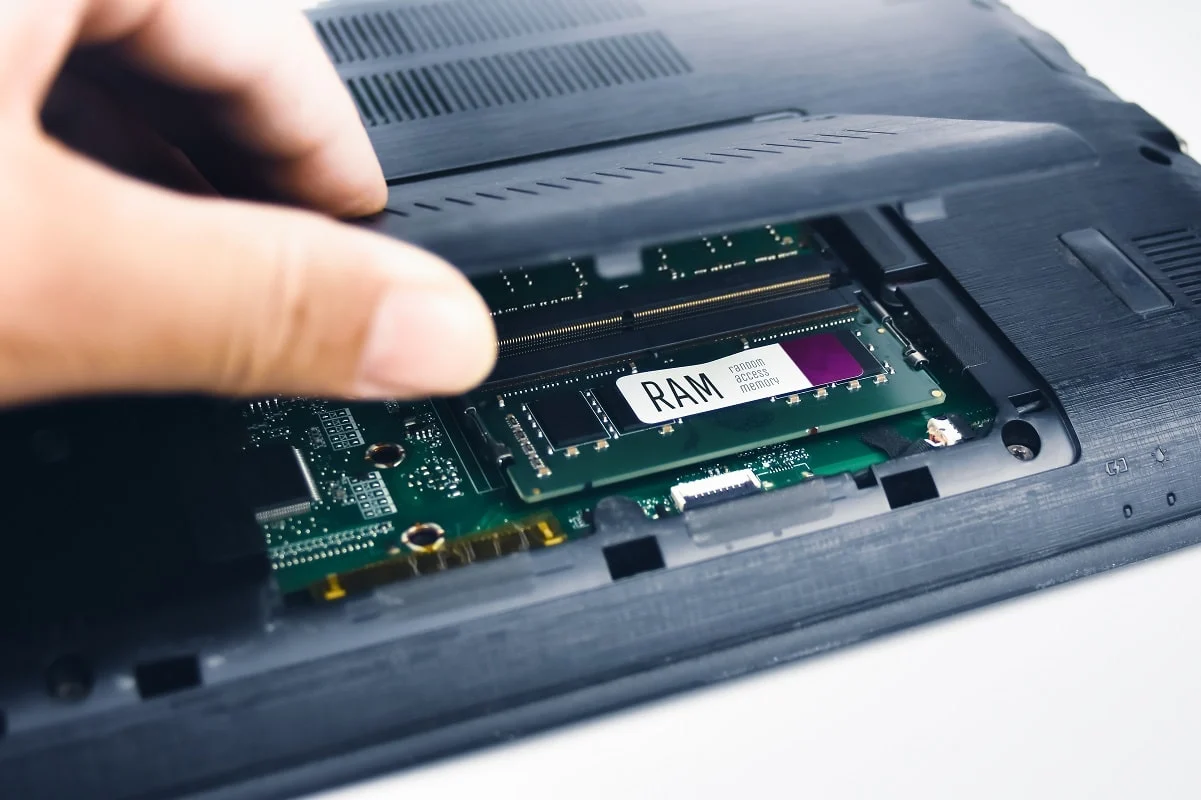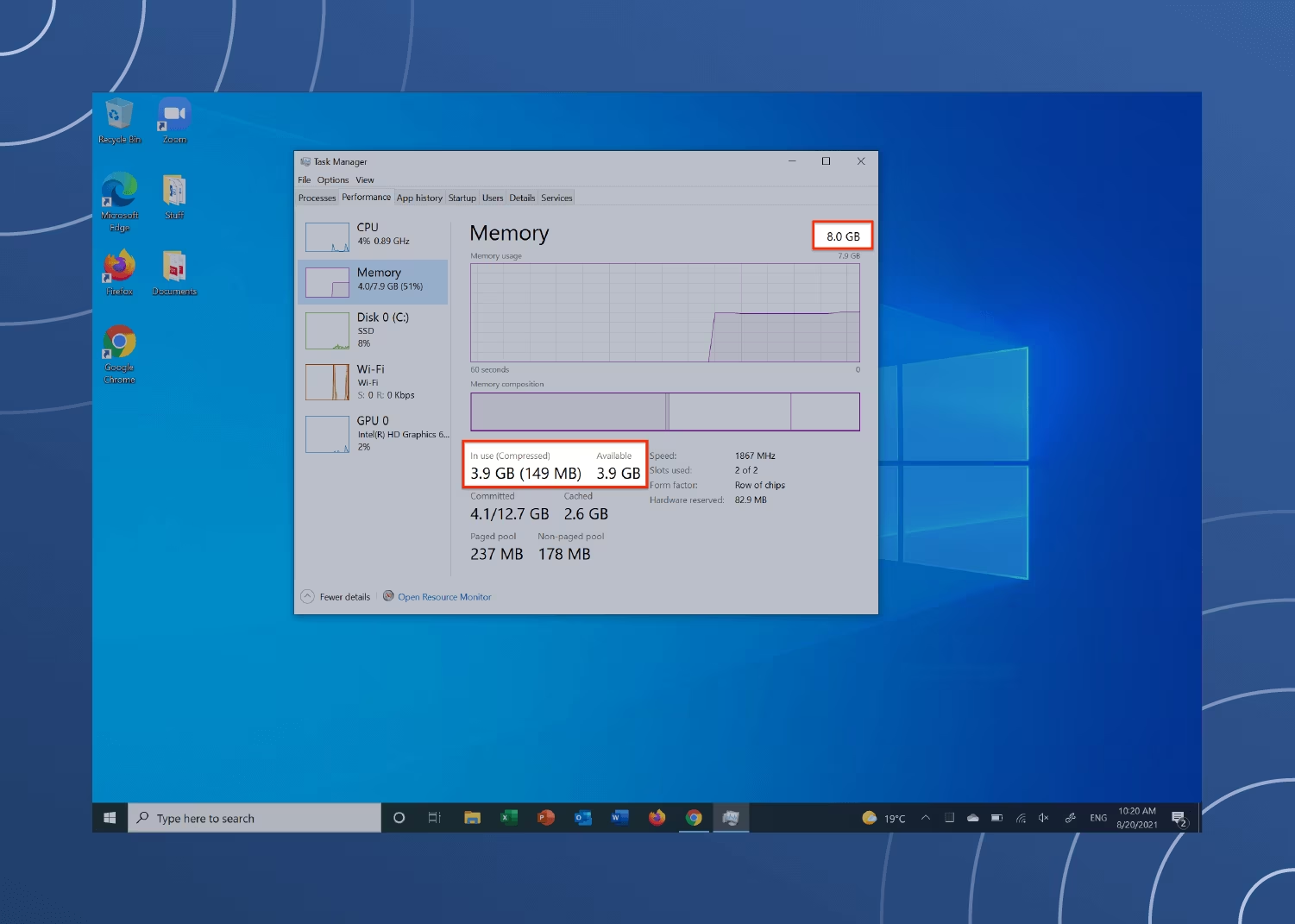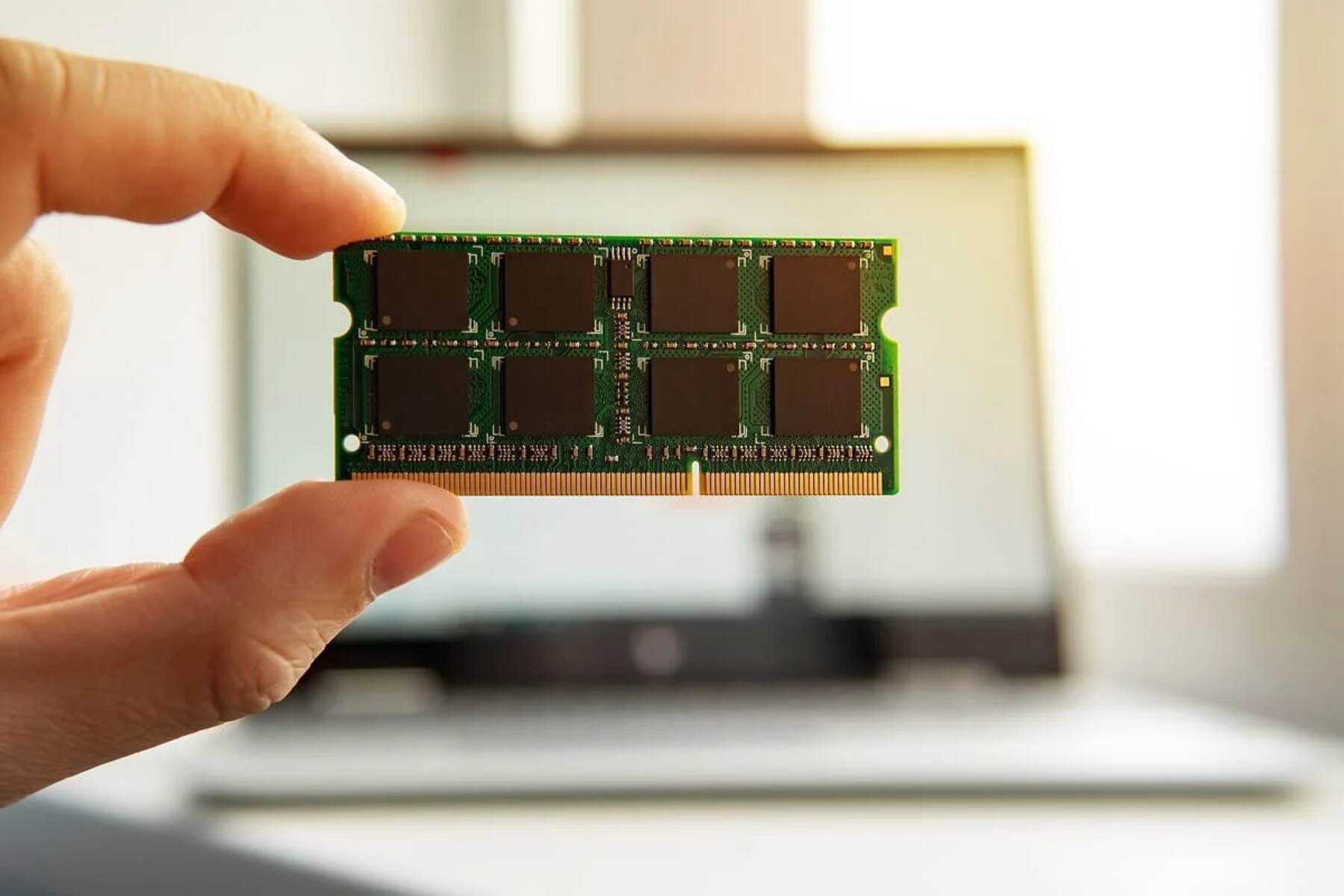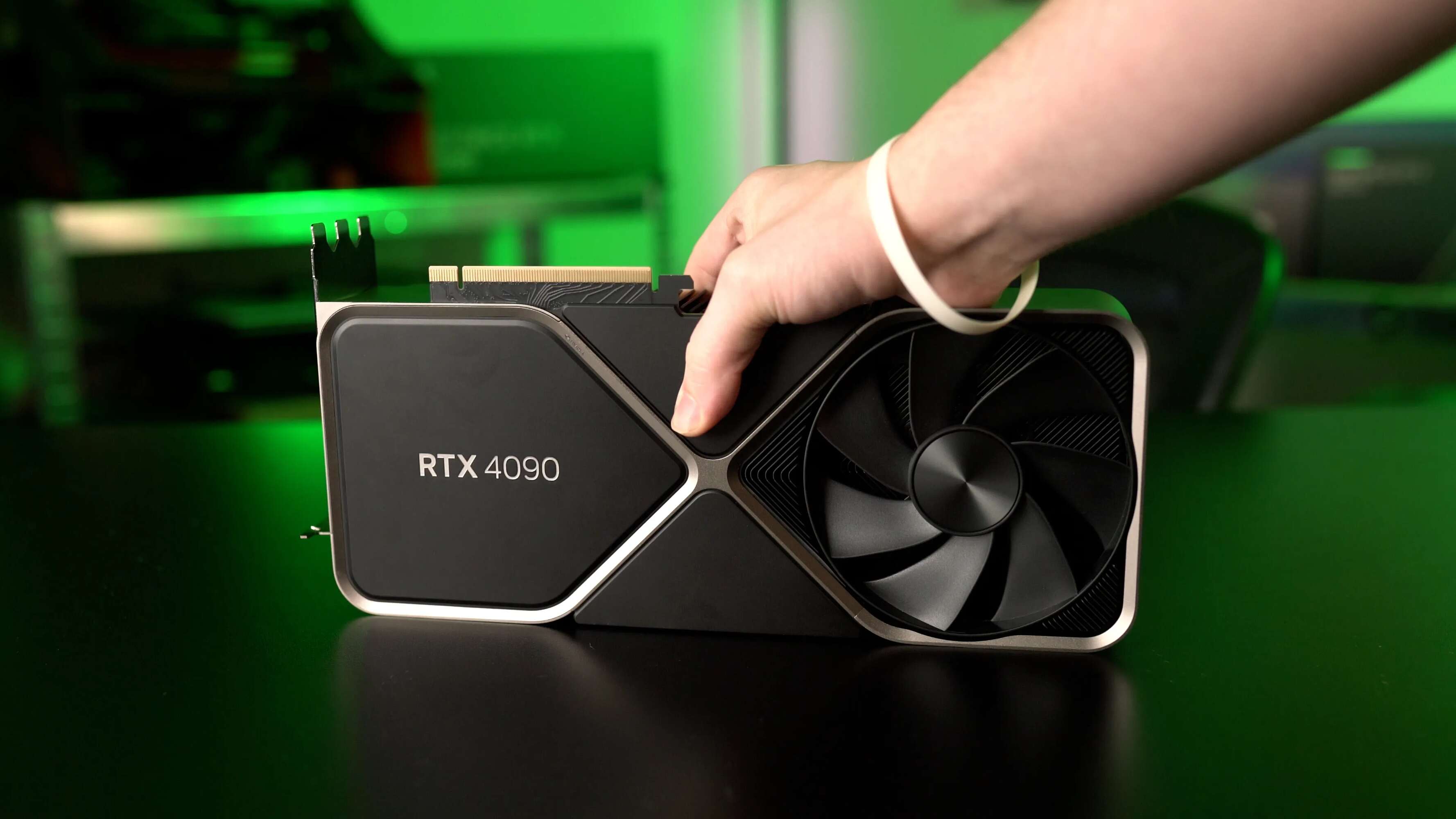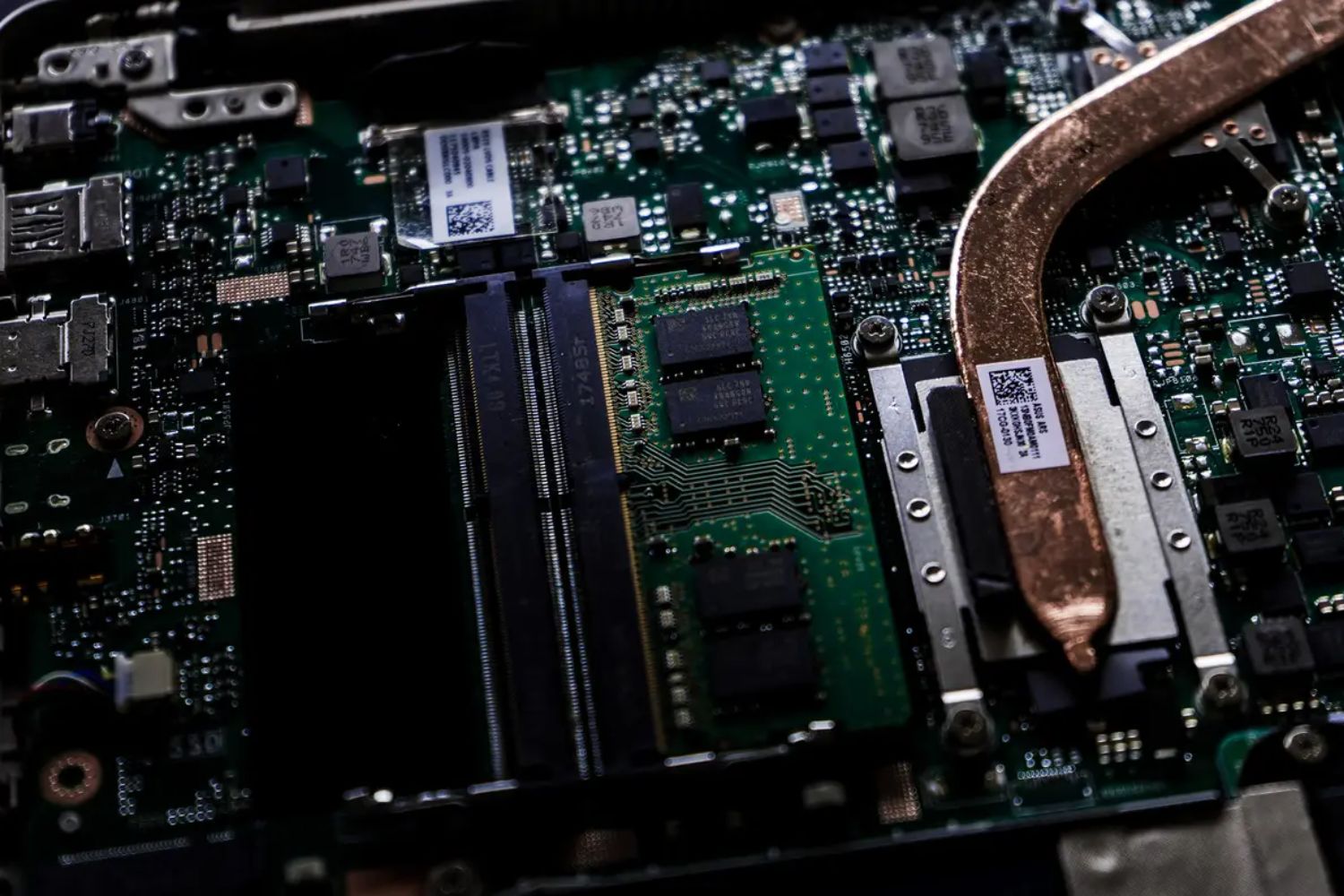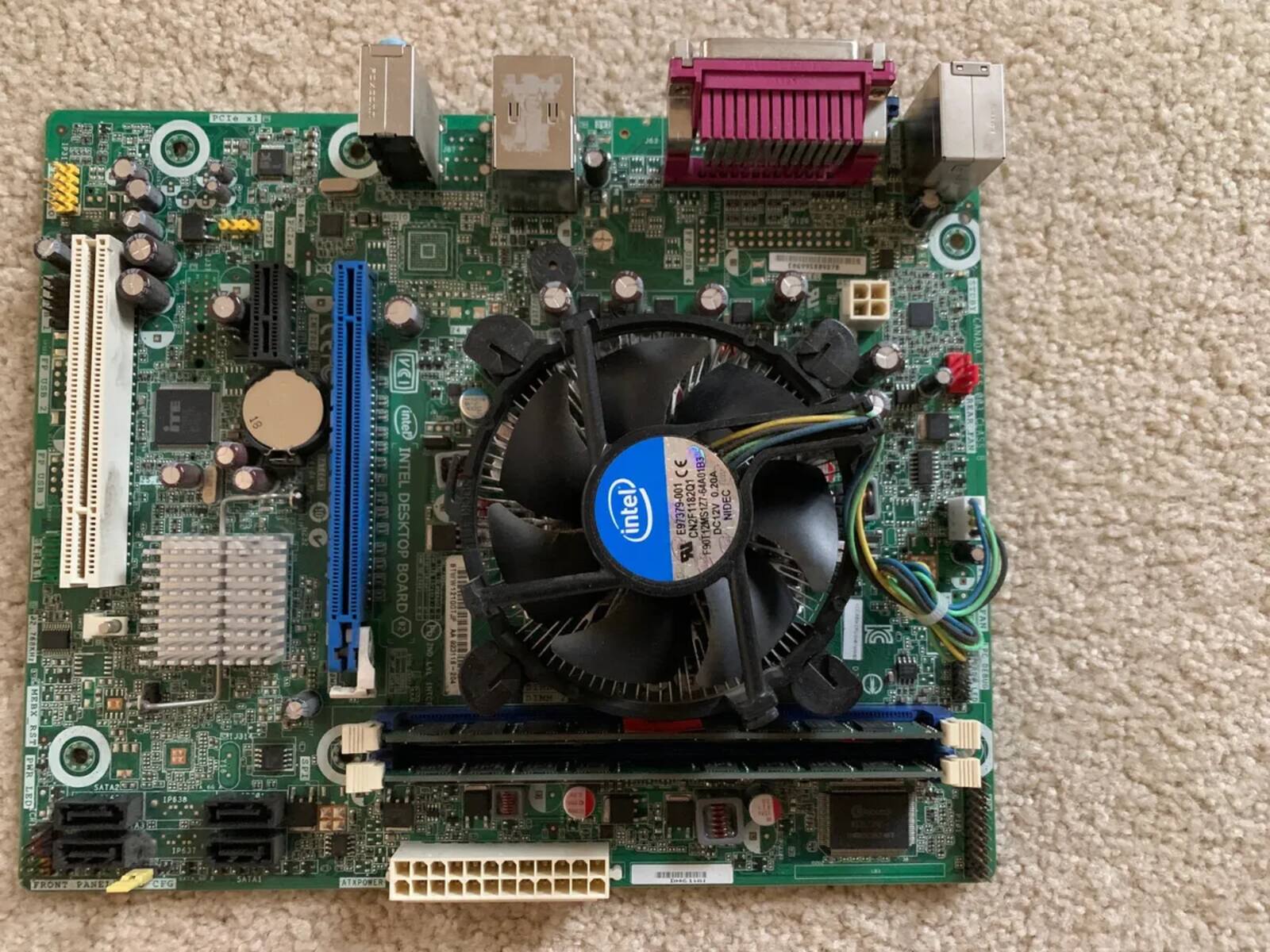Introduction
When it comes to upgrading your computer’s performance, one crucial aspect to consider is the amount of random access memory (RAM) it can handle. RAM plays a vital role in determining how efficiently your computer can run multiple applications and handle complex tasks.
Knowing the maximum RAM capacity of your computer is essential if you’re planning to upgrade its memory. It allows you to make an informed decision and ensures compatibility with the hardware and software requirements.
However, determining how much RAM your computer can handle is not as straightforward as checking a simple specification. Several factors come into play, such as the motherboard specifications, operating system limitations, CPU capabilities, and even the BIOS settings.
In this article, we will delve into the various factors that determine the maximum RAM capacity of your computer. We’ll explore how each component and software element can affect this limit and discuss the methods to determine your current RAM capacity. Lastly, we’ll provide some insights into your upgrade options.
So, let’s dive in and understand how to identify how much RAM your computer can handle and make the most out of your system’s performance potential.
Factors to Consider
Several factors come into play when determining the maximum RAM capacity that your computer can handle. It’s essential to consider each of these factors to ensure compatibility and optimize your system’s performance. Let’s take a closer look at these factors:
- Motherboard Specifications: The motherboard is the main circuit board in your computer that connects all the components. It plays a crucial role in determining the maximum RAM capacity. Check your motherboard’s documentation or manufacturer’s website to find the maximum supported RAM capacity and the types of RAM modules that are compatible.
- Operating System Limitations: Different operating systems have their own limitations on how much RAM they can effectively utilize. For example, 32-bit versions of Windows have a maximum RAM limit of 4GB, while 64-bit versions can support much larger capacities, ranging from 8GB to several terabytes depending on the edition.
- CPU Limitations: The central processing unit (CPU) also has an impact on the maximum RAM capacity. Older CPUs may have limitations that prevent them from accessing larger amounts of RAM. Consult your CPU’s documentation or manufacturer’s website to verify its maximum supported RAM capacity.
- BIOS Limitations: The Basic Input/Output System (BIOS) is firmware on your motherboard that controls hardware configurations during boot-up. Some older BIOS versions may have limitations on the maximum RAM capacity. Updating to the latest BIOS version may enable support for higher RAM capacities.
Considering these factors is crucial to determine the maximum RAM capacity that your computer can handle. By taking into account your motherboard specifications, operating system limitations, CPU capabilities, and BIOS settings, you can make an informed decision when upgrading your computer’s memory.
Motherboard Specifications
The motherboard is a critical component that determines the maximum RAM capacity your computer can handle. Each motherboard has a specific set of specifications that dictate the types and amounts of RAM it can support.
To find the maximum RAM capacity supported by your motherboard, you can refer to the motherboard’s documentation or the manufacturer’s website. Look for details such as the maximum number of RAM slots available and the maximum capacity per slot.
Another important aspect to consider is the type of RAM supported by your motherboard. Common types include DDR4, DDR3, and DDR2. In addition to the type, you’ll also want to ensure that your motherboard supports the desired speed of the RAM modules you plan to install. The maximum supported speed is often specified in the motherboard specifications.
Some motherboards may have restrictions on the total capacity when certain RAM slot configurations are used. For example, if you have two RAM slots, the motherboard may support a higher total capacity by using two lower capacity modules rather than one high-capacity module. It’s important to consult the documentation or manufacturer’s specifications for details on these restrictions.
It’s also worth noting that certain motherboards are designed for specific processors and may have limitations on the maximum RAM capacity based on CPU compatibility. Ensure that your chosen CPU is compatible with your motherboard to avoid any potential memory limitations.
Understanding your motherboard’s specifications is crucial when determining how much RAM your computer can handle. By considering the maximum supported capacity, the type and speed of RAM, and any compatibility restrictions, you can make an informed decision about upgrading your computer’s memory for improved performance.
Operating System Limitations
When it comes to determining the maximum RAM capacity your computer can handle, the operating system plays a significant role. Different operating systems have varying limitations on how much RAM they can effectively utilize.
One crucial factor to consider is whether your operating system is a 32-bit or 64-bit version. 32-bit versions of operating systems, such as Windows, have a maximum RAM limit of 4GB. This means that even if your motherboard supports more than 4GB of RAM, a 32-bit operating system will not be able to utilize the additional memory. Therefore, upgrading to a 64-bit version is necessary to take full advantage of higher RAM capacities.
64-bit operating systems offer much larger RAM capacities, ranging from 8GB to several terabytes, depending on the specific edition. Windows, macOS, and Linux all have 64-bit versions available that can support higher RAM capacities.
Keep in mind that the particular edition and version of the operating system you’re using may further impact the maximum RAM limit. For example, the Windows 10 Home edition has a maximum limit of 128GB of RAM, while the Windows 10 Pro edition supports up to 2TB of RAM.
It’s crucial to verify the maximum RAM capacity supported by your operating system before upgrading your computer’s memory. Check the official documentation or the manufacturer’s website for detailed information on the maximum RAM limit for your specific version and edition.
By considering the operating system limitations, you can ensure that your computer can effectively utilize the upgraded RAM capacity and maximize its performance potential.
CPU Limitations
When determining the maximum RAM capacity your computer can handle, it’s important to consider the limitations imposed by your CPU (central processing unit). The CPU plays a crucial role in accessing and utilizing the RAM effectively.
Older CPUs may have limitations on the amount of RAM they can support. This is typically due to architectural and technological constraints. For example, CPUs based on the 32-bit architecture can only address up to 4GB of RAM. This means that even if your motherboard supports more than 4GB of RAM, a 32-bit CPU will not be able to fully utilize the additional memory.
However, modern CPUs based on the 64-bit architecture can support significantly larger RAM capacities. The specific capability of your CPU can vary depending on the model and manufacturer.
To determine the maximum RAM capacity that your CPU can handle, consult the CPU’s documentation or visit the manufacturer’s website. Look for specifications such as the maximum supported RAM capacity and the type of RAM (e.g., DDR3, DDR4) that the CPU can utilize.
It’s crucial to ensure that your CPU is compatible with the desired RAM capacity before proceeding with a memory upgrade. Installing more RAM than your CPU can effectively utilize may result in performance issues or even system instability.
By considering the limitations imposed by your CPU, you can ensure that the installed RAM is fully utilized, allowing your computer to perform at its best.
BIOS Limitations
The Basic Input/Output System (BIOS) is firmware that resides on the motherboard and is responsible for initializing hardware components during the boot-up process. It also contains settings that can affect the maximum RAM capacity your computer can handle.
Older BIOS versions may have limitations on the maximum RAM capacity they can support. This is typically due to technical and architectural constraints present in older systems. Updating to the latest BIOS version can potentially remove these limitations and unlock support for higher RAM capacities.
To check for BIOS updates and determine if there are any RAM capacity limitations, visit the manufacturer’s website and locate the support or downloads section. Look for the BIOS updates specifically for your motherboard model. It’s important to follow the instructions provided by the manufacturer carefully to ensure a successful update process.
Once updated, access the BIOS settings by pressing a specific key during the computer’s boot-up process (usually indicated on the screen or in the motherboard manual). Look for options related to memory or RAM. Here, you may find settings that affect the maximum RAM capacity that the BIOS can recognize and utilize.
It’s important to note that incorrect BIOS settings can lead to system instability or potentially render your computer inoperable. Therefore, it’s recommended to proceed with caution and consult the motherboard’s documentation or seek guidance from the manufacturer if you’re unsure about any BIOS settings.
By updating your BIOS to the latest version and ensuring that the appropriate settings are configured, you can potentially eliminate any limitations that may hinder the maximum RAM capacity your computer can handle. This will allow your system to utilize the full potential of the installed memory for optimal performance.
Checking Current RAM Limit
Before determining how much RAM your computer can handle and planning for an upgrade, it’s essential to know the current RAM limit of your system. There are a few ways to check the maximum RAM capacity supported by your computer:
1. System Information: One of the easiest ways to check your computer’s RAM limit is by using the built-in System Information tool. On Windows, press the Windows key + R to open the Run dialog box, type “msinfo32,” and press Enter. In the System Information window that opens, look for the “Installed Physical Memory (RAM)” field. It will display the total installed RAM capacity.
2. Task Manager: On Windows, you can also use the Task Manager to check the current RAM limit. Right-click on the taskbar and select “Task Manager” or press Ctrl + Shift + Esc. In the Task Manager window, go to the “Performance” tab and click on “Memory.” Here, you’ll find information about the total installed RAM and its current usage.
3. Terminal Commands: On macOS and Linux systems, you can open a terminal and use the command line to check the RAM limit. On macOS, open the Terminal application and type “system_profiler SPHardwareDataType” followed by Enter. Look for the “Memory” section to find information about the installed RAM. On Linux, open a terminal and use the command “free -h” to display information about the total installed RAM and usage.
4. Manufacturer’s Documentation: If you have the documentation or specifications provided by the manufacturer for your computer or motherboard, it may include details about the maximum supported RAM capacity. Check the documentation or visit the manufacturer’s website to find information specific to your system.
By checking the current RAM limit of your system using these methods, you’ll have a clear understanding of the maximum RAM capacity your computer can currently handle. This information will help you determine if an upgrade is necessary and guide you in selecting the appropriate RAM modules for improved performance.
Upgrade Options
Once you have determined the maximum RAM capacity that your computer can handle, it’s time to explore the various upgrade options available to you. Here are a few considerations to keep in mind:
1. Module Type and Speed: Ensure that you select RAM modules that are compatible with your motherboard and system requirements. Check the documentation or manufacturer’s website for the supported module type (e.g., DDR3, DDR4) and the maximum speed your system can handle. Choosing the right module type and speed will ensure optimal compatibility and performance.
2. Number of Slots: Take note of the number of RAM slots available on your motherboard. If all slots are already occupied, you may need to remove existing modules or consider replacing them with higher-capacity options. If there are free slots, adding additional modules can increase your overall RAM capacity.
3. Module Capacity: Assess your current needs and consider how much additional RAM would be beneficial for your usage. If you are experiencing sluggish performance while running multiple applications or resource-intensive tasks, upgrading to a higher RAM capacity can improve system responsiveness and multitasking capabilities.
4. Budget Considerations: Take into account your budget when selecting an upgrade option. RAM prices can vary depending on the capacity and type. Balancing your needs with your budget will help you make an informed decision and ensure you get the best value for your investment.
5. Future Upgradability: Consider the potential for future upgrades when selecting your RAM modules. If your motherboard supports higher RAM capacities than what you currently require, you may opt for modules with lower capacities now and leave room for further expansion in the future.
When purchasing RAM, ensure that you acquire modules from reputable manufacturers to guarantee quality and compatibility. It’s also a good idea to check user reviews and ratings to gain insights into the performance and reliability of specific RAM modules.
Remember to follow proper installation procedures when upgrading your RAM. Power off your computer, ground yourself to prevent static electricity discharge, and carefully insert the RAM modules into the designated slots. Refer to the motherboard’s documentation for specific instructions.
By considering these upgrade options and selecting the appropriate RAM modules, you can enhance your computer’s performance, improve multitasking capabilities, and ensure smooth operation even under demanding workloads.
Conclusion
Determining the maximum RAM capacity that your computer can handle is crucial for optimizing its performance and ensuring compatibility when upgrading your system’s memory. By considering factors such as motherboard specifications, operating system limitations, CPU capabilities, and BIOS settings, you can make informed decisions about your RAM upgrade options.
Understanding your motherboard’s specifications is vital, as it determines the maximum RAM capacity and the type of RAM modules that are compatible with your system. Checking for BIOS updates and configuring appropriate settings can also remove any limitations that may restrict your computer’s maximum RAM capacity.
Be aware of the limitations imposed by the operating system and CPU as well. Upgrading to a 64-bit operating system allows for higher RAM capacities, while ensuring compatibility between the CPU and RAM is essential for optimal performance.
By checking your computer’s current RAM limit, you can assess whether an upgrade is necessary. Consider various factors such as module type and speed, the number of available slots, and the desired module capacity to determine the best upgrade option for your needs and budget.
Remember to purchase RAM modules from reputable manufacturers and follow proper installation procedures. This will help ensure compatibility, performance, and reliability.
In summary, knowing how much RAM your computer can handle is essential for maximizing its performance potential. By taking into account the relevant factors and making informed decisions about your RAM upgrade options, you can enhance your system’s multitasking capabilities, improve responsiveness, and optimize overall performance.







